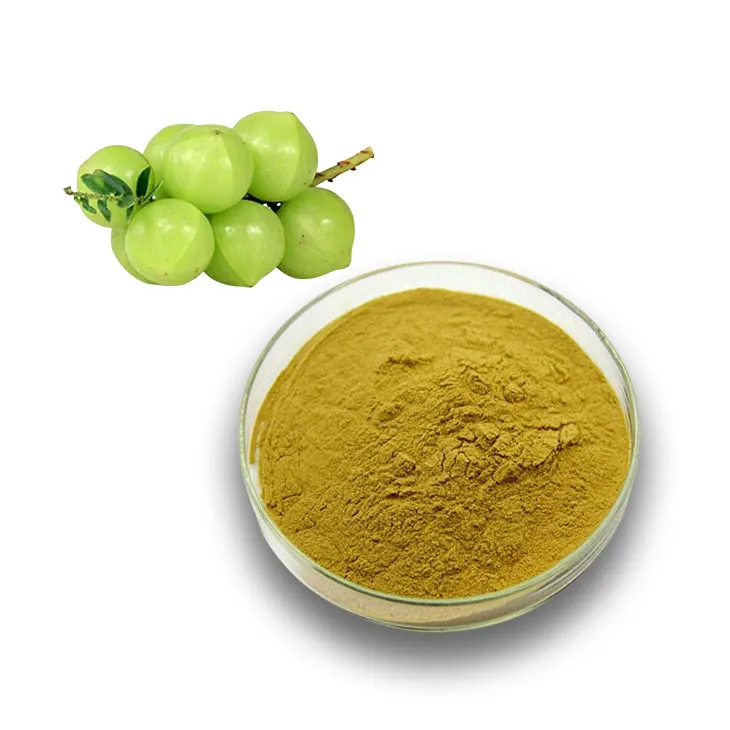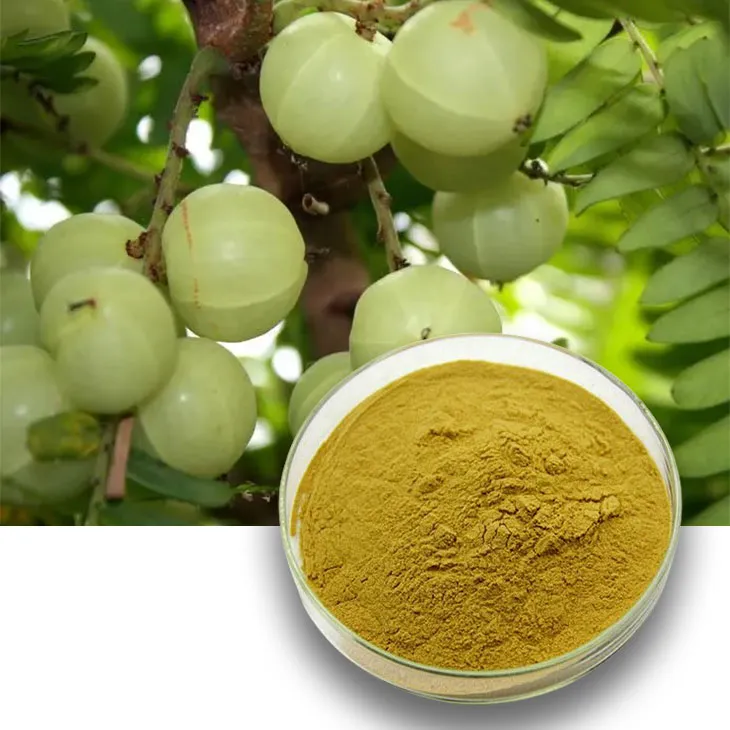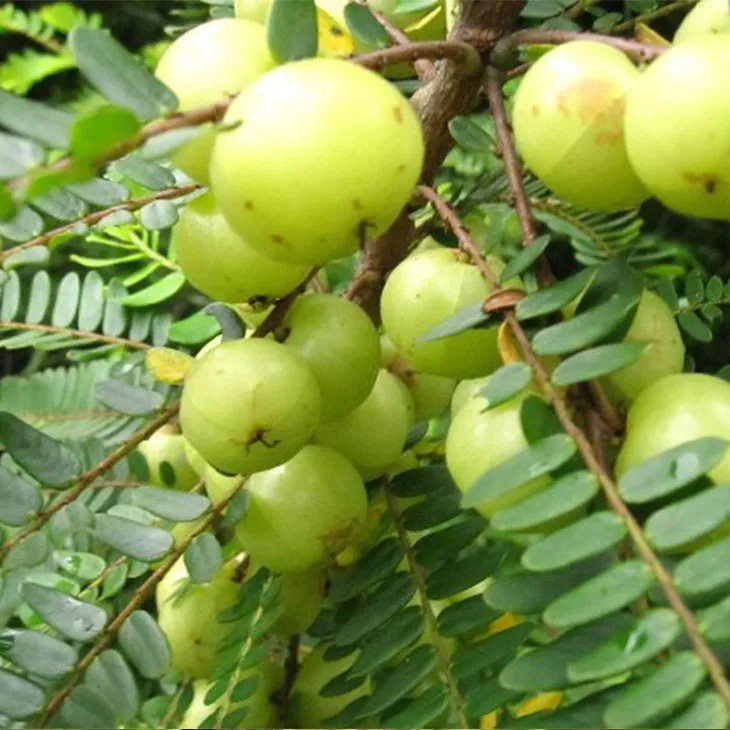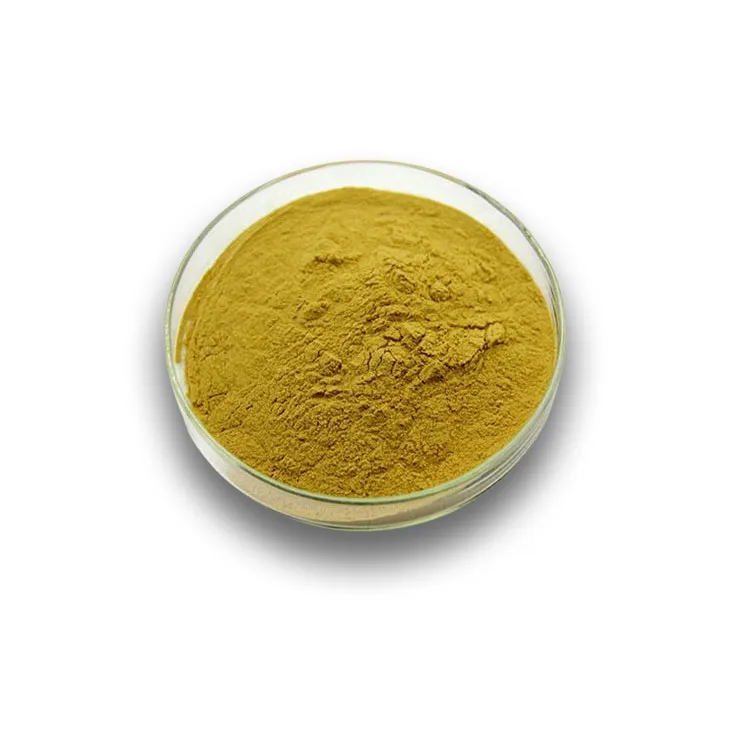- 0086-571-85302990
- sales@greenskybio.com
Extraction technology and production process of Phyllanthus emblica extract.
2024-11-30

1. Introduction
Phyllanthus emblica, also known as Indian gooseberry, is a plant with high medicinal value. The extract of Phyllanthus emblica is rich in a variety of bioactive substances, such as tannins, flavonoids, polyphenols, and vitamin C. These bioactive substances endow the extract with antioxidant, anti - inflammatory, anti - microbial, and anti - cancer properties, making it widely used in the fields of medicine, food, and cosmetics.
The extraction technology and production process of Phyllanthus Emblica Extract are crucial for obtaining high - quality products. In this article, we will comprehensively analyze the extraction technology and production process of Phyllanthus Emblica Extract, including the comparison between traditional and modern extraction methods, and the key points of quality control in the production process.

2. Extraction technology
2.1 Traditional extraction methods
Solvent extraction is one of the most common traditional extraction methods. It involves using organic solvents such as ethanol, methanol, or acetone to dissolve the bioactive substances in Phyllanthus emblica. The general process is as follows:
- First, the Phyllanthus emblica is dried and ground into powder.
- Then, the powder is soaked in the selected solvent at a certain temperature for a certain period of time.
- After that, the mixture is filtered to obtain the extract solution, and the solvent is removed by evaporation or distillation to obtain the crude extract.
2.2 Modern extraction methods
Ultrasonic - assisted extraction is a modern extraction technique that has been widely used in recent years. Ultrasonic waves can cause cavitation in the solvent, which can break the cell walls of Phyllanthus emblica more effectively, thereby improving the extraction efficiency of bioactive substances. The main steps of ultrasonic - assisted extraction are as follows:
- Prepare the Phyllanthus emblica sample in the same way as solvent extraction, that is, drying and grinding it into powder.
- Add the solvent and the powder to the extraction container, and then place the container in an ultrasonic device.
- Set the appropriate ultrasonic parameters, such as ultrasonic power, frequency, and extraction time.
- After the extraction is completed, filter and remove the solvent to obtain the extract.
Another modern extraction method is supercritical fluid extraction. Supercritical fluids, such as supercritical carbon dioxide, have the properties of both gases and liquids. They can penetrate into the cells of Phyllanthus emblica more easily and dissolve the target substances. The process of supercritical fluid extraction generally includes the following steps:
- Load the Phyllanthus emblica sample into the extraction vessel.
- Introduce supercritical fluid into the vessel and adjust the pressure and temperature to reach the supercritical state.
- Maintain the supercritical state for a certain period of time to allow the supercritical fluid to extract the bioactive substances.
- Reduce the pressure to separate the supercritical fluid from the extract, and obtain the pure extract.

3. Production process
3.1 Raw material selection and pretreatment
The quality of raw materials is the key to the production of high - quality Phyllanthus Emblica Extract. When selecting raw materials, the following factors should be considered:
- Source: It is best to choose Phyllanthus emblica from areas with good ecological environment and without pollution.
- Maturity: Mature Phyllanthus emblica usually contains more bioactive substances.
3.2 Extraction
According to the characteristics of the raw materials and the requirements of the product, an appropriate extraction method is selected. In the extraction process, strict control of extraction parameters is required, such as extraction temperature, time, solvent ratio, etc. These parameters will directly affect the extraction efficiency and the quality of the extract. For example, if the extraction temperature is too high, it may cause the degradation of bioactive substances; if the extraction time is too long, it may lead to the increase of impurity content in the extract.
3.3 Purification and concentration
The extract obtained after extraction usually contains some impurities, so purification is necessary. Purification methods include filtration, centrifugation, and chromatography. Filtration can remove large - particle impurities; centrifugation can separate fine particles and colloidal substances; chromatography can further separate and purify bioactive substances according to their different affinities for the stationary phase and the mobile phase.
After purification, concentration is required to increase the content of bioactive substances in the extract. Concentration methods mainly include evaporation and freeze - drying. Evaporation is a common method, which can remove the solvent in the extract under normal pressure or reduced pressure; freeze - drying can better preserve the activity of bioactive substances, but the cost is relatively high.
3.4 Quality control
Quality control is an important part of the production process of Phyllanthus emblica extract. Quality control should be carried out from the source of raw materials to the final product.
- Raw material quality control: Check the quality of raw materials, including the content of bioactive substances, pesticide residues, and heavy metal content.
- Extraction process control: Monitor and control the extraction parameters to ensure the stability and reproducibility of the extraction process.
- Product quality control: Test the quality of the final product, including the content and purity of bioactive substances, solvent residue, and microbial limit.

4. Conclusion
The extraction technology and production process of Phyllanthus emblica extract are complex and multi - faceted. Traditional extraction methods have certain limitations, while modern extraction methods such as ultrasonic - assisted extraction and supercritical fluid extraction have shown great advantages in terms of efficiency and product quality. In the production process, from raw material selection and pretreatment to extraction, purification, concentration, and quality control, each link is crucial for obtaining high - quality Phyllanthus emblica extract.
With the continuous development of science and technology, it is expected that more advanced extraction technologies and production processes will be developed in the future, which will further promote the application and development of Phyllanthus emblica extract in the fields of medicine, food, and cosmetics.

FAQ:
What are the traditional extraction methods of Phyllanthus emblica extract?
The traditional extraction method of Phyllanthus emblica extract is mainly solvent extraction. This method uses solvents such as ethanol or methanol to dissolve the bioactive substances in Phyllanthus emblica. However, this method may have the problem of solvent residue.
How does ultrasonic - assisted extraction improve the efficiency of Phyllanthus emblica extract?
Ultrasonic - assisted extraction uses ultrasonic waves to generate cavitation effects. These cavitation effects can break the cell walls of Phyllanthus emblica more effectively, making it easier for the bioactive substances inside to be released into the solvent. Thus, it can improve the extraction efficiency compared to traditional methods.
What aspects should be considered in the quality control of the production process of Phyllanthus emblica extract?
In the production process of Phyllanthus emblica extract, quality control should be carried out from multiple aspects. Firstly, the quality of raw materials should be strictly controlled, including the origin, variety and freshness of Phyllanthus emblica. Secondly, during the extraction process, parameters such as extraction time, temperature and solvent ratio need to be monitored. Finally, for the final product, tests such as purity and bioactivity should be carried out to ensure its quality.
What are the bioactive substances in Phyllanthus emblica extract?
Phyllanthus emblica extract is rich in various bioactive substances, such as polyphenols, flavonoids, tannins and vitamin C. These bioactive substances endow Phyllanthus emblica extract with antioxidant, anti - inflammatory and other biological activities.
Are there any other modern extraction techniques for Phyllanthus emblica extract besides ultrasonic - assisted extraction?
Yes, there are other modern extraction techniques. For example, supercritical fluid extraction can also be used for Phyllanthus emblica extract. Supercritical fluid extraction uses supercritical fluids (such as supercritical CO2) as solvents. It has the advantages of low solvent residue, high selectivity and good environmental protection.
Related literature
- Title: Advances in Extraction Technologies of Phyllanthus emblica Extract"
- Title: "The Production Process and Quality Control of Bioactive Phyllanthus emblica Extract"
- Title: "Study on the Bioactive Substances in Phyllanthus emblica Extract and Their Extraction"
- ▶ Hesperidin
- ▶ citrus bioflavonoids
- ▶ plant extract
- ▶ lycopene
- ▶ Diosmin
- ▶ Grape seed extract
- ▶ Sea buckthorn Juice Powder
- ▶ Beetroot powder
- ▶ Hops Extract
- ▶ Artichoke Extract
- ▶ Reishi mushroom extract
- ▶ Astaxanthin
- ▶ Green Tea Extract
- ▶ Curcumin Extract
- ▶ Horse Chestnut Extract
- ▶ Other Problems
- ▶ Boswellia Serrata Extract
- ▶ Resveratrol Extract
- ▶ Marigold Extract
- ▶ Grape Leaf Extract
- ▶ blog3
- ▶ blog4
-
Chinese D - mannose manufacturers
2024-11-30
-
Chinese saponin extract powder suppliers.
2024-11-30
-
100% Pure Organic Calendula Extract.
2024-11-30
-
The Most Well - received Lily Extract.
2024-11-30
-
Active components in ginger extract.
2024-11-30
-
Echinacea Extract
2024-11-30
-
Black Garlic Extract
2024-11-30
-
Lavender Extract
2024-11-30
-
Eyebright Extract
2024-11-30
-
Clove Powder
2024-11-30
-
Wheat Germ Extract
2024-11-30
-
Shikone Extract
2024-11-30
-
Senna Leaf Extract
2024-11-30
-
Red Vine Extract
2024-11-30
-
Tongkat Ali Extract Powder
2024-11-30





















